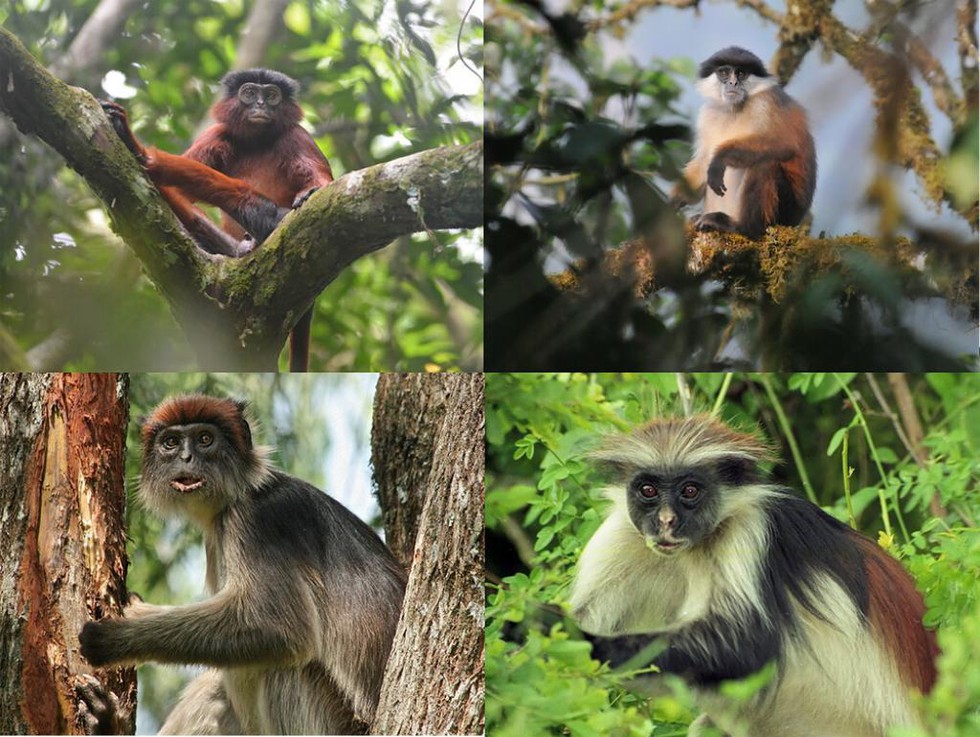
About Hindu Marriage Act, 1955 (HMA Act):
- It codifies the law relating to marriage among Hindus.
- It not only provides for the ceremonies and registration for Hindu marriage but also lays down rules regarding divorce.
- Salient Features:
- A Hindu by birth or by conversion is the subject of HMA Act.
- The definition of Hindu under the HMA Act includes Buddhist, Jain, and Sikh as well.
- Marriageable age:
- The bridegroom must be at least 21 years old, and the bride must be at least 18 years old when they get married.
- Marriage among minors is punishable with imprisonment upto 3 years and/or fine upto Rs 1 lakh.
- Significance of ceremonies:
- Customary practices (customs/ long-term usages (Reeti-Riwaz)) are well respected under the HMA Act.
- Saptapadi, i.e., steps taken by the bride and groom before holy fire, is a necessary ritual for marriage among Hindus.
- However, marriage ceremonies are subject to customs and accepted accordingly.
- Forbidding bigamy:
- It also brought an end to the customary practice of bigamy, polygamy, or polyandry, i.e, multiple marriages.
- Section 5 of the Act specifies that it is illegal to have two living wives at once, which is known as bigamy.
- If one spouse is alive and the person remarries, such marriage is not only void, but the person is also punishable under Sections 494 and 495 of the Indian Penal Code, 1860.
- Focus on mental stability:
- A marriage is considered null and void if anyone one or both the people get married being mentally unfit.
- In such cases, the couple must get legal consent before getting married.
- Registration:
- Registration of a Hindu marriage is subject to laws applicable in particular states.
- However, a marriage is not invalid or illegal due to lack of an official certificate.
- Divorce:
- The Act also allows divorce through mutual consent.
- Although parties are legally not allowed to seek divorce within 1 year of marriage, they can go for judicial separation.
- However, divorce may be granted before completion of 1 year in special circumstances of exceptional hardship.
- It provides for the various grounds on the basis of which, divorce can be granted to one of the spouses if another does not agree to separate.
- There are special grounds which specifically allow the wife to seek divorce from her husband.
- Restitution of conjugal rights:
- Unlike any other matrimonial laws in India, the HMA Act also contains provisions for restitution of conjugal rights.
- So, if one of the spouses leaves the other without any reasonable excuse, the other spouse may reach the court to restore their matrimonial relations and bring back the spouse.
- Legal Procedures:
- Matters of Hindu marriages and divorce follow procedure in family courtin India.
- Matters under the Act are taken up by the courts of territorial jurisdiction (city/ town) where the marriage was celebrated, where one of the parties resides, or where the husband and wife last resided together.
2. What is Adsorption?

About Adsorption:
- It refers to the adhesion of atoms, ions, or molecules from a gas, liquid, or dissolved solid to the surface of a material.
- It is considered a surface phenomenon that creates a film of the adsorbate on the surface of the adsorbent (a solid material, for instance).
- Materials that are used to adsorb gases or dissolved substances are called adsorbents; the adsorbed molecules are usually referred to collectively as the adsorbate.
- How Adsorption Works?
- Adsorption depends on surface energy.
- The surface atoms of the adsorbent are partially exposed, so they can attract the adsorbate
- Adsorption may result from electrostatic attraction, chemisorption, or physisorption.
- Characteristics of Adsorbents:
- Typically, adsorbents have small pore diameters so that there is a high surface area to facilitate adsorption.
- The pore size usually ranges between 0.25 and 5 mm.
- Industrial adsorbents have high thermal stability and resistance to abrasion.
- Depending on the application, the surface may be hydrophobic or hydrophilic.
- The adsorbents come in many shapes, including rods, pellets, and molded shapes.
- Examples of adsorbents include Silica gel, Alumina, Activated carbon or charcoal, Zeolites, Adsorption chillers used with refrigerants, Biomaterials that adsorb proteins, etc.
- Adsorption is a different process from absorption, in which a substance diffuses into a liquid or solid to form a solution.
- Adsorption phenomena are operative in most natural physical, biological, and chemical systems, and adsorption operations employing solids such as activated carbon and synthetic resins are widely used in industrial applications and for the purification of waters and wastewaters.
3. Key Facts about ISRO’s Space Applications Centre (SAC)

About Space Applications Centre (SAC):
- It is a major research and development centre of the Indian Space Research Organisation (ISRO). Located in Ahmedabad, Gujarat, SAC is spread across two campuses with multi-disciplinary activities.
- Genesis:
- The genesis of the centre dates back to 1966, with the establishment of the Experimental Satellite Communication Earth Station (ESCES) by the late Vikram Sarabhai in Ahmedabad.
- Later in 1972, the different units of ISRO in Ahmedabad pursuing research in applications of space technology were merged to form SAC.
- The core competence of the centre lies in the development of space borne and air borne instruments/payloads and their applications for national development and societal benefits.
- These applications are in diverse areas and primarily meet the communication, navigation, and remote sensing needs of the country.
- Besides these, the centre also contributes significantly to scientific and planetary missions of ISRO like Chandrayan-1, the Mars Orbiter Mission, etc.
- The communication transponders developed at this Centre for Indian National Satellite (INSAT) and Geo Synchronous Satellite (GSAT) series of satellites are used by the government and private sector for VSAT, DTH, Internet, broadcasting, telephones, etc.
- This centre also designs and develops the optical and microwave sensors for the satellites, signal and image processing software, GIS software, and many applications for the Earth Observation (EO) programme of ISRO.
- These applications are in diverse areas of Geosciences, Agriculture, Environment and Climate Change, Physical Oceanography, Biological Oceanography, Atmosphere, Cryosphere, Hydrosphere, etc.
- Facilities: The facilities at SAC include highly sophisticated payload integration laboratories, electronic and mechanical fabrication facilities, environmental test facilities, systems reliability / assurance group, image processing and analysis facilities, project management support group, and a well-stocked library.
- SAC is a host institution for the training programmes for students from the Asia Pacific region under the aegis of the Centre for Space Science and Technology Education in Asia and the Pacific (CSSTE-AP) in satellite meteorology and communication.
4. What is Antares?

About Antares:
- Antares, also known as Alpha Scorpii, is the alpha, or brightest, star in the constellation Scorpius, and the 15th-brightest star in the whole night sky.
- It is a massive red supergiant star. It is 10,000 times brighter than our sun.
- It is one of the largest known stars, 700 times the sun's diameter, large enough to engulf the orbit of Mars if the solar system were centered on it.
- Despite its size, the overall density of Antares is less than one-millionth that of the sun.
- Antares is also relatively cool as stars go. Its surface temperature is about 6,100 degrees F (3,400 degrees C). That’s in contrast to our sun’s surface temperature of about 10,000 degrees F (5,500 degrees C).
- The star's low temperature accounts for its ruddy color.
What is a Red Supergiant star?
- They are very large stars that are approaching the later stages of their stellar life.
- They have a radius that is several hundred to 1500 times that of the Sun.
- Though they are great in size, the red color indicates that stars of this type have a relatively low surface temperature.
- They are highly luminous.
- Most red supergiants are variable stars. This means, their degree of brightness changes and fluctuates as seen on Earth.
- Also, these stars are actively losing mass. Nebulae have been seen around them as they expel material.
5. Supersonic Missile-Assisted Release of Torpedo (SMART) System

About Supersonic Missile-Assisted Release of Torpedo (SMART) System:
- It has been designed and developed by the Defence Research and Development Organisation.
- It was launched from a ground mobile launcher from the Dr APJ Abdul Kalam Island off the Odisha coast.
- Features
- This missile-based mechanism to launch lightweight torpedoes can target submarines hundreds of kilometres away — far beyond the conventional range of lightweight torpedoes.
- It will be particularly employed in the absence of other assets for immediate action when an enemy submarine is detected.
- It is the canister-based missile system comprises several advanced subsystems including two-stage solid propulsion and precision inertial navigation.
- It carries an advanced lightweight torpedo missile as a payload along with a parachute-based release mechanism.
- Several state-of-the-art mechanisms, such as symmetric separation, ejection and velocity control, have been validated with this test.
6. Kutch Ajrakh

About Kutch Ajrakh:
- The Ajrakh is a textile craft, holds deep roots in the cultural tapestry of Gujarat, particularly in the regions of Sindh, Barmer, and Kutch, where its legacy spans millennia.
- The art of Ajrakh entails a meticulous process of hand-block printing on treated cotton cloth, culminating in intricate designs infused with rich symbolism and history.
- Ajrak’s nomenclature originates from ‘Azrak’, meaning indigo, a well-known substance most often employed as a powerful dye to achieve a bluish effect.
- Ajrakh prints have traditionally consisted of three colors: blue which signifies the sky, red which signifies the land and the fire, and white which signifies the stars.
- Textiles are treated with vegetable and mineral colours and the fabric goes through a washing cycle about eight times.
- This craft was introduced to this region over 400 years back by the Sind Muslims.
- Nomadic pastoralist and agricultural communities like the Rabaris, Maldharis, and Ahirs wear Ajrakh printed cloth as turbans, lungis, or stoles.
7. Navratna status

About Navratna status:
- The government categorises all Public Sector Undertakings (PSUs) into three categories, namely Maharatna, Navratna, and Miniratna.
- The Government had introduced the ‘Navratna’ scheme in 1997.
- Criteria for Navratna status
- A PSU should be a Miniratna-I, Schedule 'A'company, should have obtained an 'excellent' or 'very good' MoU rating in three of the last five years, and must have a composite score of 60 in six performance indicators.
- It must report a net profit of more than Rs 5,000 crore for three consecutive years, and maintain an average annual turnover of Rs 25,000 crore for three years, or have an annual average net worth of over Rs 15,000 crore for three years.
- Benefits
- Financial Independence: They invest up to ₹1,000 crore without seeking approval from the central government.
- Navratna companies are also allowed to invest up to 15% of their net worth on a single project, or 30% of their net worth in a given year, subject to a cap of ₹1,000 crore.
- To incur capital expenditure on purchase of new items or for replacement, without any monetary ceiling.
- To enter into technology joint ventures or strategic alliances.
8. Project ISHAN

About Project ISHAN:
- The Indian Single Sky Harmonized Air Traffic Management (ISHAN) initiative aims to streamline and enhance air traffic management.
- India is planning a major move to unify its four Flight Information Regions (FIRs) in Delhi, Mumbai, Kolkata and Chennai into one continuous airspace in Nagpur and have harmonized Air Traffic Management from Nagpur.
- The Airports Authority of India (AAI), the public entity invited expressions of interest (EoI) for the preparation of a detailed project report.
- What's the arrangement at present?
- Currently, Indian airspace is divided into four flight information regions (FIRs) in Mumbai, Kolkata, Delhi, Chennai, and a sub-FIR in Guwahati each managed separately.
- Significance: It is expected to streamline operations, enhance capacity, and alleviate congestion, benefiting both airlines and passengers.
Key facts about AAI
- It is a statutory body under the Directorate General of Civil Aviation, Ministry of Civil Aviation, Government of India.
- It was constituted by an Act of Parliament and came into being on 1st April 1995, by merging the erstwhile National Airports Authority and the International Airports Authority of India.
- It is entrusted with the responsibility of creating, upgrading, maintaining, and managing civil aviation infrastructure both on the ground and in air space in the country.
- It also provides Air Traffic Management Services(ATMS) over the entire Indian Air Space and adjoining oceanic areas, with ground installations at all airports, and 25 other locations to ensure the safety of aircraft operations.
9. Red Colobus

About Red Colobus:
- These are a rare group of imperilled monkeys spread across Africa, are primary indicators of biodiversity.
- Red colobus monkeys are one of two major simian groups globally.
- Colobines are primarily leaf-eaters, as compared to the cercopithecines, which are omnivores and thus include animals in their diet as well.
- Colobines also include the langurs of south and southeast Asia besides Africa’s colobus (olive and black-and-white besides red) monkeys.
- Distribution: Ranging from forests in Senegal to the Zanzibar Archipelago.
- Most red colobus are facing extinction, making them the most threatened group of non-ape primates in mainland Africa.
- More than half of the 18 distinct forms of red colobus monkeys (scientists are unclear about how many species there are) are classified as Endangered or Critically Endangered on the IUCN Red List of Threatened Species.
- Threats:
- Hunting for trade and local subsistence.
- Habitat loss, degradation and fragmentation due to logging, mining, charcoal production, infrastructure development and conversion of forest to farms and agriculture plantations.
Initiative to conserve Red Colobus
- The Red Colobus Conservation Action Plan, initiated by the International Union for Conservation of Nature (IUCN) Species Survival Commission Primate Specialist Group and the African Primatological Society.
- The action plan aims to make red colobus a priority conservation target, which will help to secure Africa's tropical forests and reduce unsustainable hunting for wild meat.
- A Red Colobus Working Group (RCWG) has been formed to guide implementation of the action plan and a Red Colobus Conservation Network (RCCN) has been created to promote communication, capacity-building and monitoring of red colobus conservation efforts.


























































































































































.png)
.png)
.png)
.png)
.png)


.png)
.png)
.png)





.png)
.png)






.png)
.png)
.png)
.png)
.png)
.png)
.png)
.png)
.png)

.png)







.png)
.png)


.png)
.png)
.png)


.png)

.png)
.png)





.jpg)

.png)
.png)


.png)

.png)
.png)
.png)

.jpg)

.jpg)


.png)

.png)
.png)
.png)
.png)
.png)
.png)
.png)
.png)
.png)
.png)




.png)

.png)





.png)
.png)
.png)
.png)
.png)
.png)
.png)
.png)
.png)
.png)
.jpg)
.jpg)

.png)
.png)
.png)
.png)
.png)
.png)
.png)
.png)
.png)
.png)
.png)
.png)
.png)
.png)
.png)
.png)
.png)
.png)
.png)
.png)
.png)
.png)



.png)
.png)

.jpg)
.jpg)


.jpg)
.jpg)
.jpg)
.jpg)
.jpg)

.jpg)








.jpg)
.jpg)
.jpg)
.jpg)
.jpg)

















.jpg)
.jpg)







.jpg)


















.jpg)
.jpg)






























































































.jpg)
.jpg)


























.jpg)

.jpg)










.jpg)








.jpg)




.jpg)










.jpg)


















.jpg)












































.jpg)














.jpg)
.jpg)
.jpg)





.jpg)

.jpg)
.jpg)





































































.jpg)


































.jpg)
.jpg)
















































.jpg)












.jpg)


.jpg)




.jpg)
.jpg)
.jpg)

.jpg)
.jpg)
.jpg)
.jpg)

.jpg)
.jpg)
.jpg)

.jpg)
.jpg)
.jpg)
.jpg)
.jpg)
.jpg)
.jpg)
.jpg)

.jpg)


.jpg)
.jpg)
.jpg)
.jpg)
.jpg)
.jpg)
.jpg)
.jpg)
.jpg)
.jpg)











.jpg)
.jpg)





.jpg)
.jpg)
.jpg)
























.jpg)
























.jpg)









.jpg)
.jpg)







.jpg)
.jpg)









































.jpg)
.jpg)
.jpg)
.jpg)
.jpg)

.jpg)
.jpg)
.jpg)
.jpg)
.jpg)


.jpg)
.jpg)
.jpg)
.jpg)
.jpg)

.jpg)
.jpg)
.jpg)
.jpg)
.jpg)
.jpg)
.jpg)
.jpg)
.jpg)
.jpg)
.png)

.png)
.png)

.png)
.png)
.png)
.png)


.jpg)
.jpg)

.jpg)
.jpg)
.jpg)

.png)
.png)
.png)
.png)
.png)
.png)
.png)

.png)
.png)
.png)
.png)
.png)
.png)
.png)
.png)
.png)
.png)





































































-min.png)



.png)




.png)








































